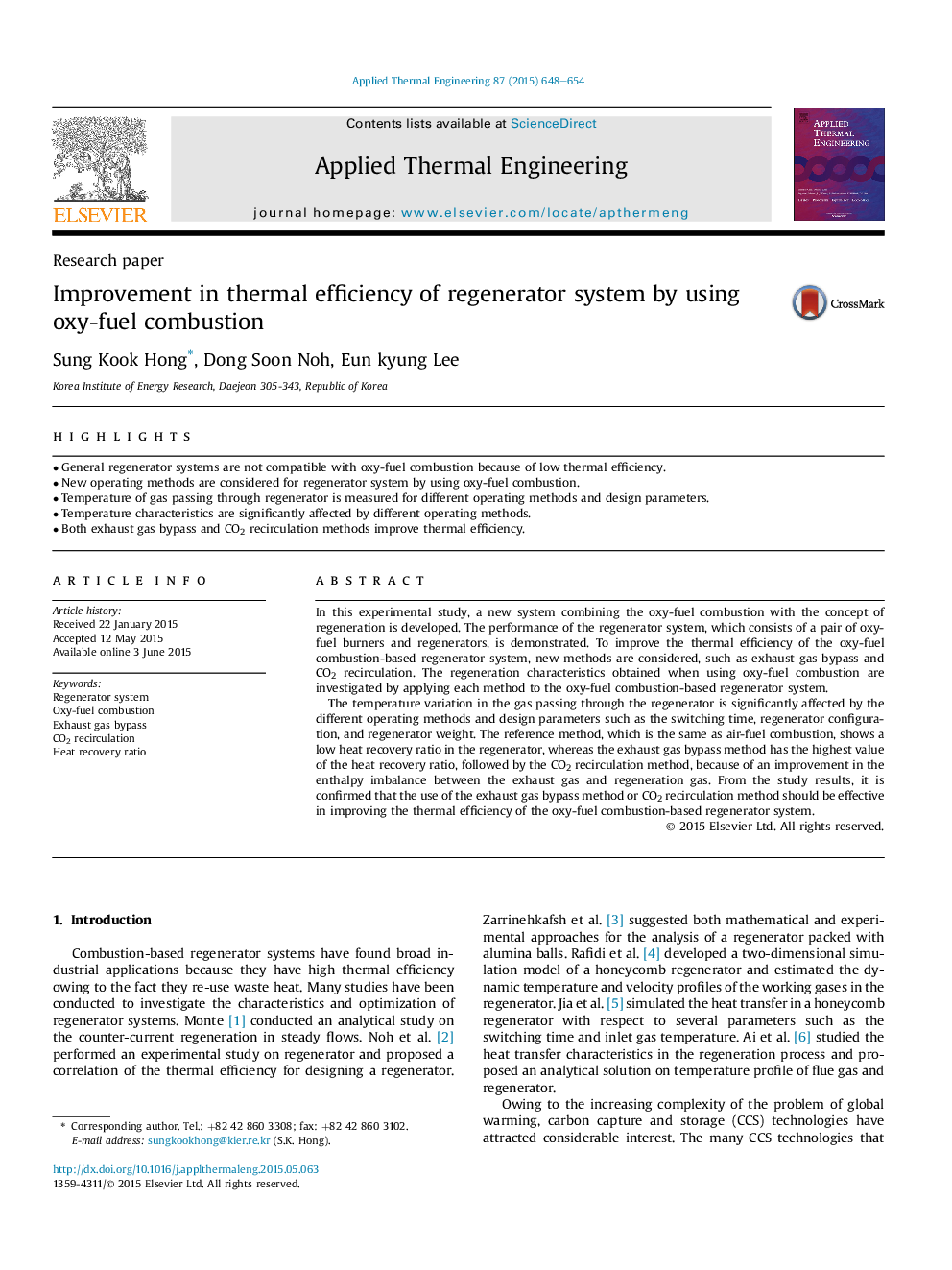| Article ID | Journal | Published Year | Pages | File Type |
|---|---|---|---|---|
| 645263 | Applied Thermal Engineering | 2015 | 7 Pages |
•General regenerator systems are not compatible with oxy-fuel combustion because of low thermal efficiency.•New operating methods are considered for regenerator system by using oxy-fuel combustion.•Temperature of gas passing through regenerator is measured for different operating methods and design parameters.•Temperature characteristics are significantly affected by different operating methods.•Both exhaust gas bypass and CO2 recirculation methods improve thermal efficiency.
In this experimental study, a new system combining the oxy-fuel combustion with the concept of regeneration is developed. The performance of the regenerator system, which consists of a pair of oxy-fuel burners and regenerators, is demonstrated. To improve the thermal efficiency of the oxy-fuel combustion-based regenerator system, new methods are considered, such as exhaust gas bypass and CO2 recirculation. The regeneration characteristics obtained when using oxy-fuel combustion are investigated by applying each method to the oxy-fuel combustion-based regenerator system.The temperature variation in the gas passing through the regenerator is significantly affected by the different operating methods and design parameters such as the switching time, regenerator configuration, and regenerator weight. The reference method, which is the same as air-fuel combustion, shows a low heat recovery ratio in the regenerator, whereas the exhaust gas bypass method has the highest value of the heat recovery ratio, followed by the CO2 recirculation method, because of an improvement in the enthalpy imbalance between the exhaust gas and regeneration gas. From the study results, it is confirmed that the use of the exhaust gas bypass method or CO2 recirculation method should be effective in improving the thermal efficiency of the oxy-fuel combustion-based regenerator system.
